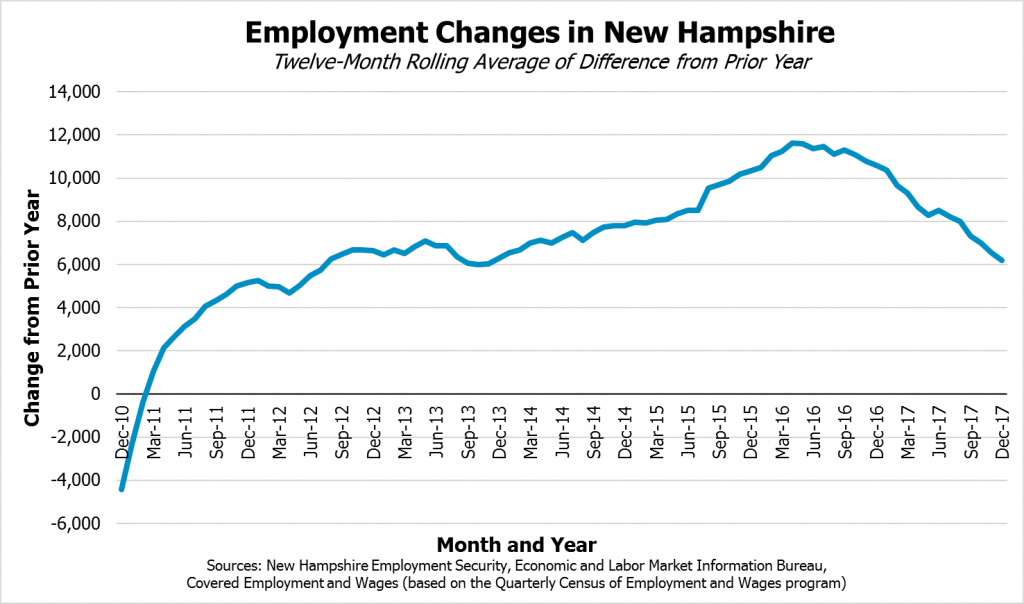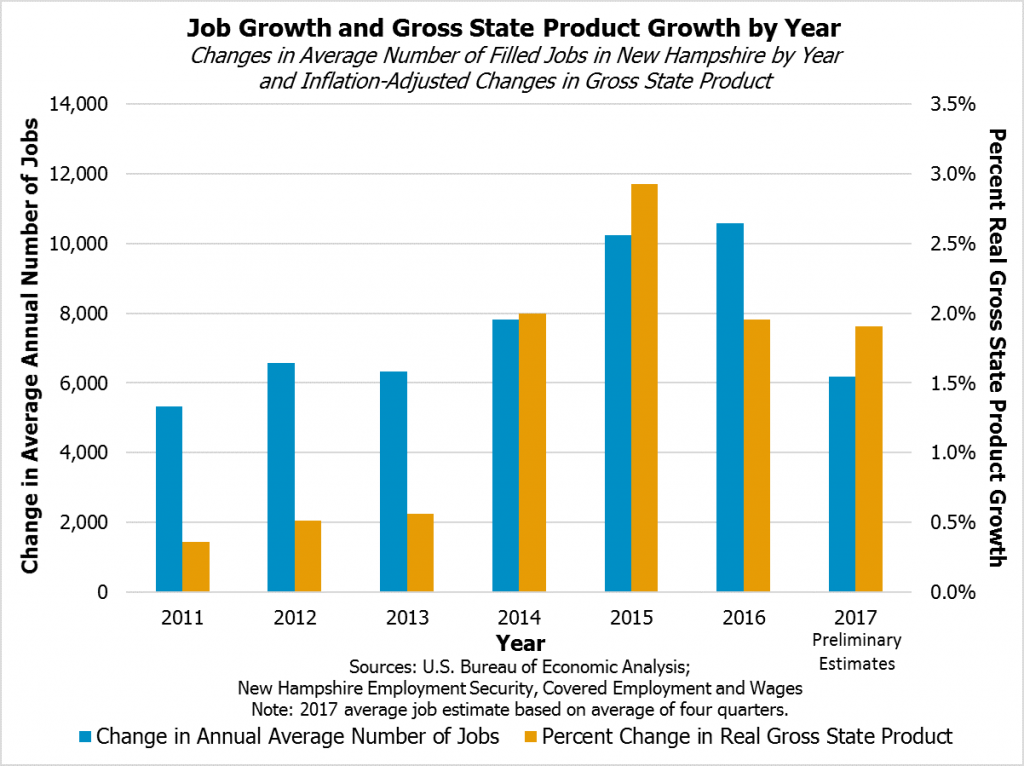The rate jobs were added to the economy in New Hampshire during 2017 was considerably lower than during 2016, suggesting fewer additional jobs are being filled in the state. This slowing in job growth from the higher levels seen during 2015 and 2016 may reflect that, in a growing economy with a low unemployment rate, many employers are having difficulty finding workers to fill positions.
According to figures released last week by New Hampshire Employment Security, there were an average of 661,186 jobs in the state in December 2017. These data do not track whether one individual holds two part-time jobs or whether an individual crosses state borders to work; this is a count of jobs based within New Hampshire’s borders. Seasonal variations do affect these data, but a 12-month rolling average reveals trends over time. Comparing the difference between each month and the same month of the prior year, a rolling average shows the number of jobs increased in New Hampshire relative to the year before most steeply in late 2015 and early 2016, with the most sustained growth peaking in 2016.
However, since the end of 2016, the increase in the number of jobs has fallen back to approximately the levels from 2012 and 2013, which was a period of slow economic growth in New Hampshire following the Recession. Gross state product, adjusted for inflation, grew about one-half of a percent each year in 2012 and 2013 and slightly less in 2011, while 2015 saw 2.9 percent growth and 2016 saw 2.0 percent, with preliminary estimates for 2017 suggesting a similar level. However, directly comparing December 2017 to December 2016 shows a gain of 4,266 positions, while comparing December 2016 to December 2015 shows an increase of 8,296 and follows a December-to-December gain at the end of 2015 of 10,694. Rolling and annual averages help control for seasonal variations but still show a similar trend, indicating New Hampshire’s economy is adding fewer employees. This trend suggests that, compared to other periods of the economic recovery, New Hampshire may face a disconnect between overall economic growth and the number of employees added.
Indications of a possible disconnect may be diminished following later revisions to the data, but these data may also be the statewide result of the workforce constraints local employers report facing. Economic demand for goods and services may be high and pushing economic growth forward, but hiring may have slowed because of a lack of available workers to employ in open positions. If this is the primary reason for slower hiring, then economic growth may also be constrained relative to its potential, as employers do not have the ability to provide services or fulfill orders at the pace they would be able to if a larger workforce were available.
Demographic and housing constraints may limit New Hampshire’s ability to add workers to the labor force quickly, but investing in existing workers in the state may enable greater levels of productivity and a higher quality of life for those residents. Although one key measure of labor underutilization has returned to levels from prior to the Great Recession, New Hampshire still has discouraged workers, workers marginally attached to the labor force, and workers who are only working part time but would prefer to work full time. Finding ways to enhance the productivity of these residents in the labor force could increase their incomes and fill needs for workers in the state, both of which would likely help the state’s economy and improve quality of life for New Hampshire residents.
For more information on the state economy, including potential challenges from demographic and housing trends, see NHFPI’s Issue Brief New Hampshire’s Economy: Strengths and Constraints published June 4, 2018.


